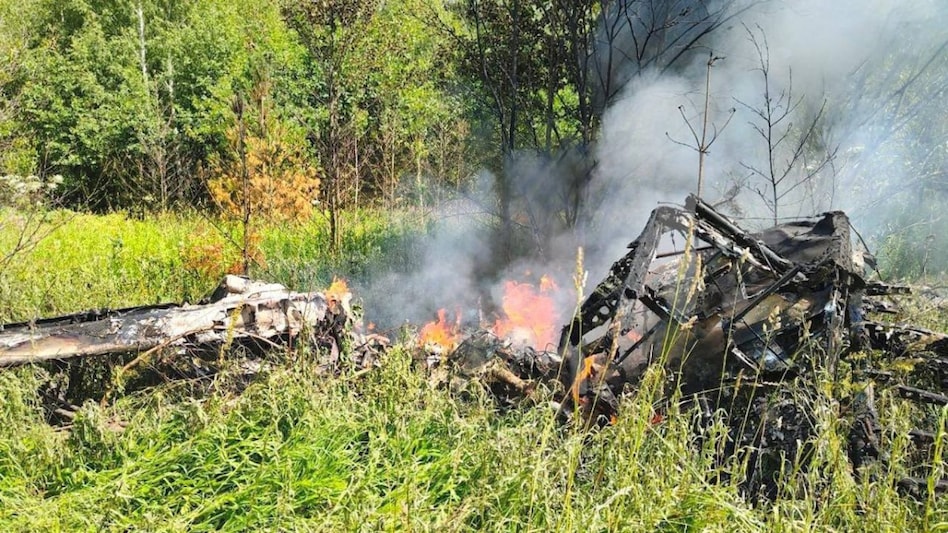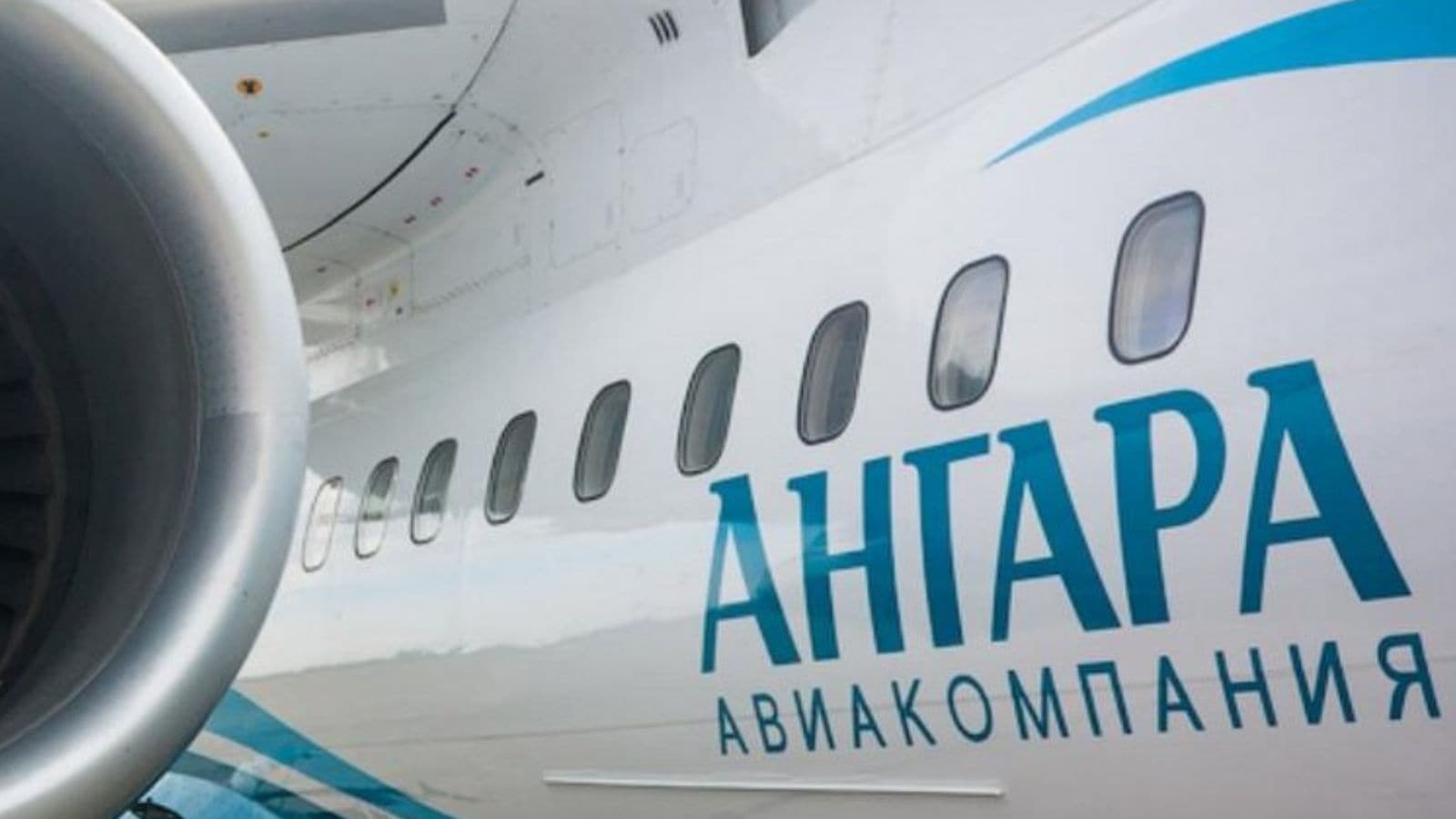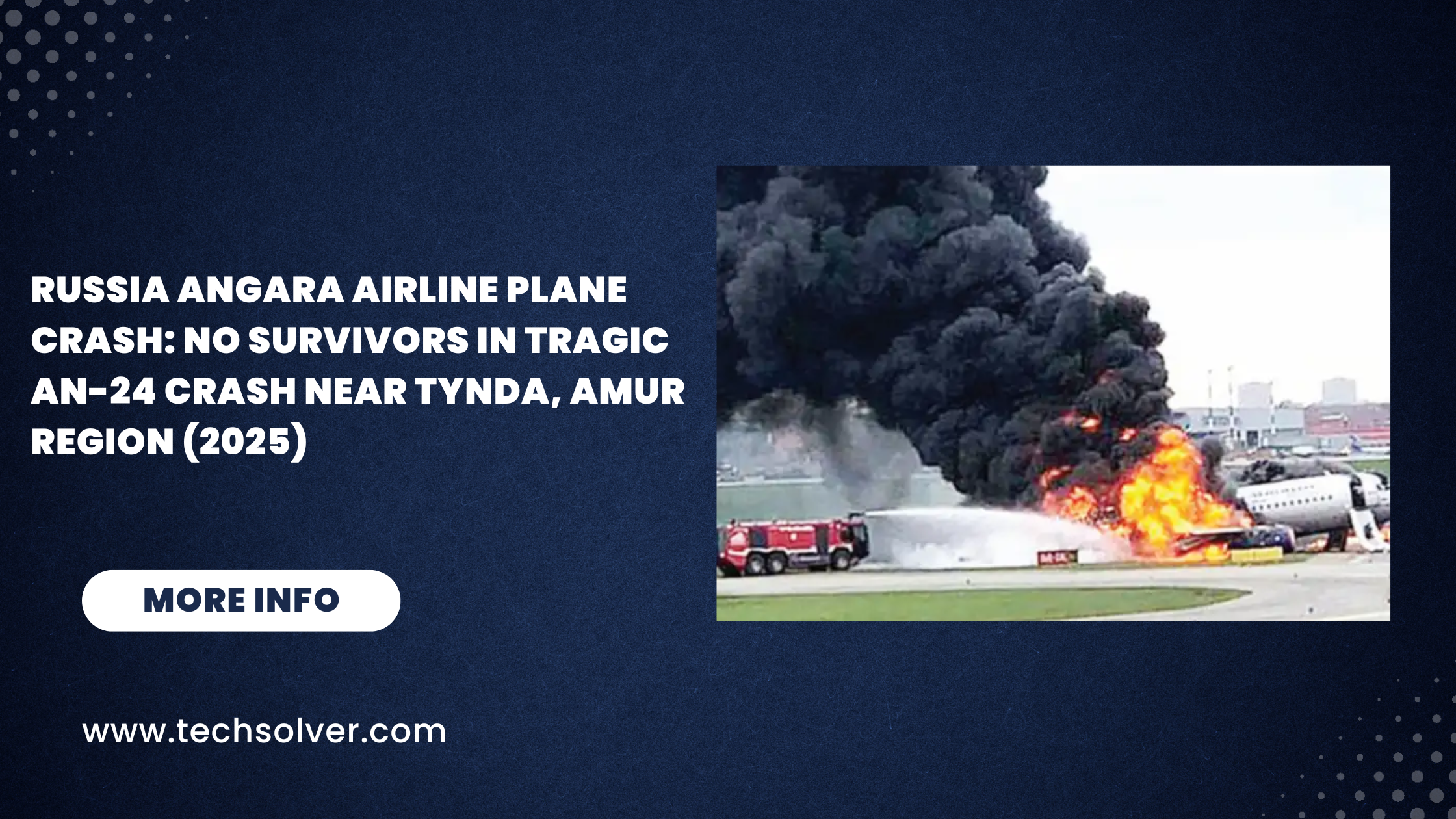In a devastating air tragedy, a Russian passenger plane belonging to Angara Airlines crashed near Tynda in the eastern Amur region on July 24, 2025. The aircraft, a 50-year-old Soviet-era An-24, was carrying nearly 50 people, including children and crew members. The crash has left no survivors, according to preliminary reports by state news agencies and government officials.
Flight Details and Route: Russia Angara Airline Plane Crash

The ill-fated flight was operating on the Khabarovsk–Blagoveshchensk–Tynda route. It belonged to Angara Airlines, a regional carrier based in Siberia. The aircraft went off radar while approaching Tynda, a small town in the Amur regionbordering China. According to reports, the weather conditions were poor, with low visibility, which may have contributed to the crash.
Why Russia Angara Airline Plane Crash?

The aircraft suddenly vanished from radar screens during its final approach into Tynda. It was later found crashed on a mountainside, approximately 16 kilometers from the destination. Emergency services and helicopters were immediately deployed after losing contact, and the burning wreckage of the plane was later discovered in a remote area surrounded by dense taiga and marshland.
No Distress Signal Sent
What makes the incident more shocking is that the aircraft sent no distress signals before disappearing. This has raised questions about the state of the aircraft and the speed at which the tragedy unfolded. The wreckage was found only after extensive searching due to the challenging terrain, which significantly delayed rescue efforts.
Number of People Onboard
The exact number of people onboard varies slightly across reports. According to Russia’s Emergencies Ministry, there were 40 passengers, including two children, along with six crew members. However, the regional governor Vasily Orlov mentioned 43 passengers, of which five were children. Regardless of the difference, authorities have confirmed that no one survived the crash.
Cause of the Crash: Preliminary Findings
Preliminary investigations suggest crew error during landing in poor visibility could be the main reason for the crash. Russian state media TASS reported that early observations indicate that the aircraft’s approach in foggy or unclear weather may have confused the crew or prevented them from making a safe landing. However, the investigation is still ongoing, and final conclusions will be made only after analyzing flight data and cockpit voice recorders.
Old Aircraft Raises Concerns
One of the most alarming facts surrounding this tragedy is the age of the aircraft. The An-24 model, identified by its tail number, was built in 1976, making it almost 50 years old. These aircraft were once common across the former Soviet Union but have become increasingly rare due to aging technology and maintenance concerns. The crash reignites debate on Russia’s use of outdated planes in civil aviation, especially in remote regions like Siberia and the Far East.
Safety Checks and Airline History
According to official sources, the aircraft underwent its last inspection by Rostransnadzor (Federal Transport Oversight Authority) in July 2025, just weeks before the crash. Angara Airlines, though small, has been operating in Siberia for several years, mostly flying to remote and hard-to-reach towns. While it has not been involved in many past disasters, this incident may now prompt authorities to review safety protocols and fleet age.
Legal Action and Investigation : Russia Angara Airline Plane Crash

Following the crash, a criminal case has been launched under Article 263, Part 3 of Russia’s criminal code. This covers violations of air traffic safety rules leading to multiple deaths. Russian aviation experts and accident investigators are currently on-site, and flight recorders (black boxes) are being sought from the wreckage. It could take weeks or even months before an official report is released.
Impact on the Region and Response Efforts
The crash has shocked not just the Amur region, but the entire nation. Families of the passengers have been contacted, and grief centers have been set up in Blagoveshchensk and Tynda. Emergency services, including rescue helicopters, fire crews, and law enforcement, responded promptly but were hindered by the remote location and rough terrain. Russian President Vladimir Putin and Prime Minister Mikhail Mishustin have been briefed on the tragedy and have expressed condolences to the families.
Russia’s Aviation Safety Under Scrutiny
This accident adds to a string of aviation safety issues that Russia has faced over the past decade. While major cities like Moscow and St. Petersburg have modern fleets and strict regulations, regional airlines often operate older aircraft. The lack of modern infrastructure, challenging weather, and limited budgets have made flying in these areas more dangerous compared to global standards.
Experts now urge the Federal Air Transport Agency to re-evaluate the use of Soviet-era aircraft and consider grounding outdated planes to avoid future disasters. The An-24 aircraft, specifically, has been the subject of past warnings and restrictions due to its age and mechanical limitations.
What Happens Next? Russia Angara Airline Plane Crash

Authorities will now focus on:
- Recovering the flight data recorder and cockpit voice recorder
- Identifying all victims and notifying families
- Conducting a full investigation into the cause of the crash
- Evaluating Angara Airlines’ fleet and operational safety
- Considering a nationwide review of aging aircraft in service
The Russian aviation industry, already under international pressure due to geopolitical issues, may now face greater scrutiny from both domestic and global aviation bodies.
Final Words
The Angara Airlines An-24 crash near Tynda is a stark reminder of the dangers of flying in extreme conditions with outdated equipment. As rescue teams continue their recovery efforts and investigators search for answers, the nation mourns the tragic loss of nearly 50 lives, including innocent children. The crash will likely prompt serious changes in Russia’s regional aviation policies, especially around fleet modernization, weather-related protocols, and crew training.
Read this to earn money online
